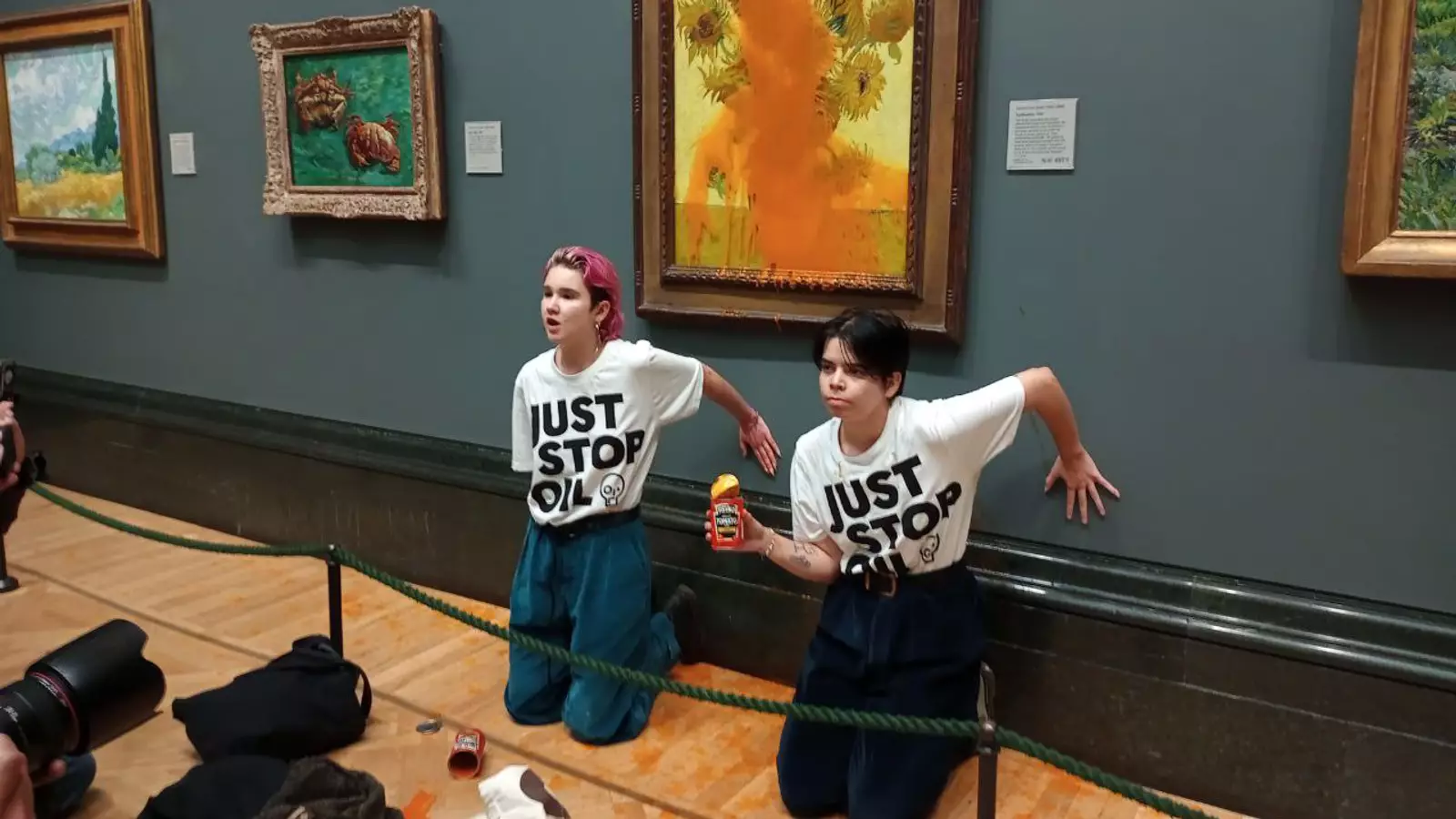In a significant move to protect its collections and ensure visitor safety, the National Gallery in London has instituted a ban on liquids, with exceptions made only for baby formula, expressed milk, and prescribed medications. This ban, effective immediately, reflects the institution’s response to a series of vandalism incidents aimed at its notable artwork, particularly high-profile pieces like Vincent van Gogh’s **Sunflowers**. The gallery’s decision underscores the increasing tension between cultural preservation and activist actions that aim to draw attention to urgent social issues.
Since July 2022, the art world has witnessed an alarming surge in the defacement of classic masterpieces. The National Gallery, in its announcement, referenced several attacks, including actions against John Constable’s **The Hay Wain** and Velázquez’s **Rokeby Venus**. These acts are not merely isolated events; they represent a growing trend of using artwork as a backdrop for social protests. Such incidents have not only jeopardized the integrity of these masterpieces but have also disrupted the tranquil environment that museums strive to maintain for both the artworks and their patrons.
The museum’s statement reflects their frustration and resolve, noting the distress caused to visitors and staff. Indeed, the gallery claims the recent attacks have pushed them to implement these new rules, embodying their commitment to maintaining a space where art can be experienced without the shadow of potential damage.
Under the new regulations, visitors are encouraged to come prepared with minimal belongings, notably urged to avoid large bags. The implementation of walk-through metal detectors and bag inspections signals an evolving approach to security that impacts the flow of entry, likely resulting in longer wait times for those eager to see the artworks. This transition emphasizes a key challenge facing modern museums: balancing access to art with the necessary precautions to protect it.
The gallery is navigating a fine line between creating a welcoming atmosphere and enforcing stringent rules that may deter casual visitors. Art institutions traditionally pride themselves on accessibility; however, the recent events may necessitate a reevaluation of how to maintain that ethos while ensuring safety and preservation.
This new chapter in the museum’s history also highlights the broader implications of activist tactics in the cultural space. The Just Stop Oil group, which has been identified as an instigator in the recent incidents, is representative of a growing movement that insists on foregrounding climate crisis discussions at every opportunity, even at the expense of cultural artifacts. While their actions aim to bring urgent issues to light, the intersection of activism and art raises critical questions about the methods employed to engage public consciousness.
As activists plead not guilty to charges of criminal damage, the dialogue surrounding the legitimacy of their actions against the backdrop of cultural heritage becomes increasingly complex. The National Gallery’s decision to restrict access to certain items presents a new reality where the preservation of art may come to mean the curtailment of visitors’ freedoms.
The measures taken by the National Gallery encapsulate an evolving dynamic in the world of art, where the protection of invaluable works contends with the fervent expressions of social activism. While the gallery remains committed to its mission of making art accessible to all, it faces the daunting task of recalibrating visitor engagement strategies in the context of growing vandalism concerns. The ongoing challenge will be to foster a cultural environment where art can be celebrated without compromise while navigating the potent messages of those who seek to use it as a tool for change.


Leave a Reply